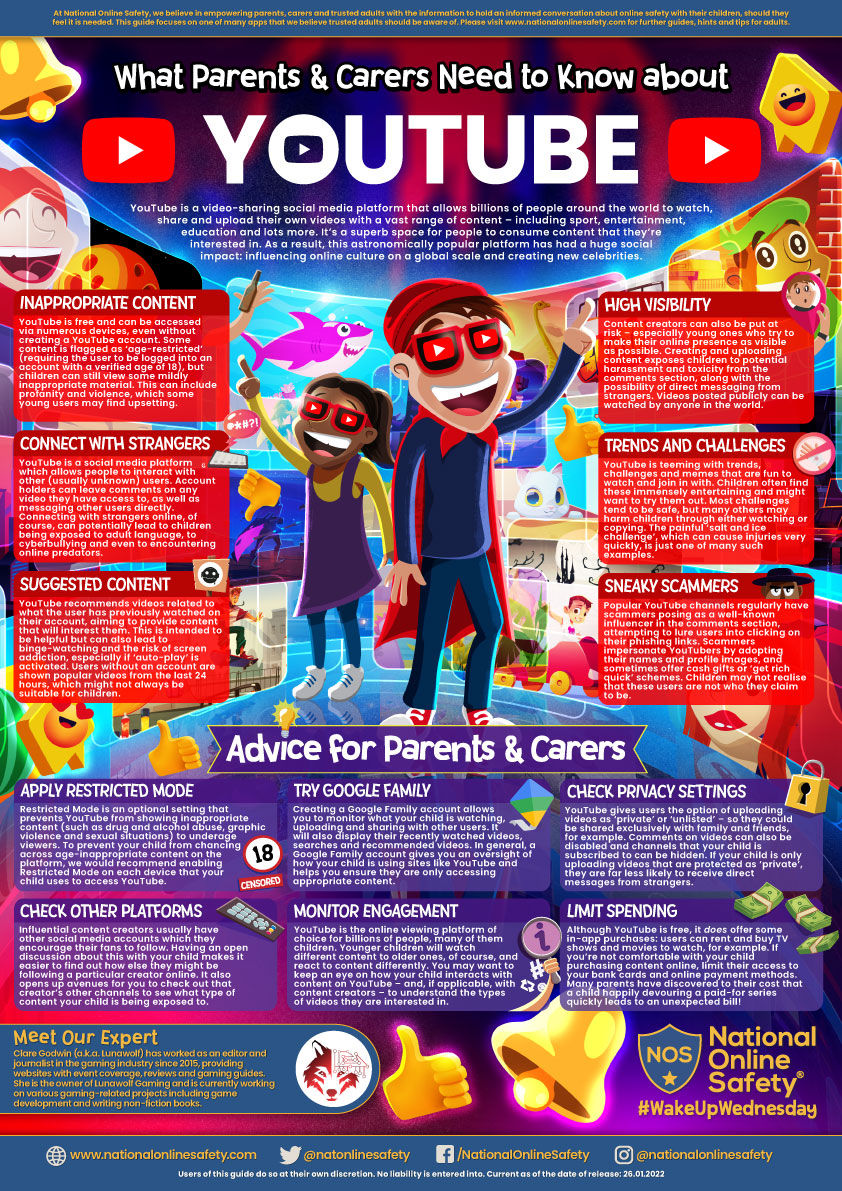
We want to encourage our young people to access the wider world, build upon their interests and inspire their curiosity with a variety of powered learning tools. However, we also understand the need to balance this with selected controls to ensure the safety of all our young people when using this equipment whilst at school.
If you have any concerns about any young person and internet safety please share them with Headteacher, Elizabeth Cornish.
-
Our school Wifi has RM SafetyNet for filtering and firewall built in. This protects our young people from inappropriate content online whilst they are accessing devices using the school Wifi. If you would like further information about RM SafetyNet and their provision, please visit their website.
-
Class teachers maintain regular contact with families and when appropriate resources are shared and meetings held to discuss online safety and support parents to add controls to their devices.
-
Interactive boards in classrooms help to engage our young people and provide shared experiences however these are only accessed by specific accounts with very limited access to documents and areas of our network.
-
We are amazed by what our learners can show us when given access to an iPad and are aware we have an important role to play in teaching our young people how to appropriately engage with these very motivating devices. At Glenwood learners only have access to iPads during specific times for the day such as iPad clubs or during specific powered learning activities. These activities are run with small sized groups with additional support from HLTAs to ensure they are being used safely. All apps for school iPads must be downloaded centrally and only then can they be added to each iPad. This ensures we have control of which apps are available to learners.
-
Communication iPads (Proloquo2go) have very limited capabilities to ensure they are used appropriately. This allows us to give learners the independence when using these communication aids.
-
We know how much music means to many of our young people and accessing songs through YouTube really helps to bring groups together and encourage communication. All classes are encouraged to use YouTubeKids. Where this is not available, song lyric videos are played. Learners request songs from choice boards to ensure the staff can control what songs are being heard within the class.
-
Sometimes our learners need to bring personal devices into school. This is carefully managed with individual risk assessments put in place in partnerships with families. The rationale and controls are also included on that individual's Pupil Support Strategy (PSS).

Online Safety at Home
Below is advice offered by the NSPCC to filter content and manage the time children spend online. It is also important to have conversations with your young person about what they are accessing online and agree boundaries. Most providers will offer help on using these tools.
-
Parental controls on the home Wifi, mobile phone network, individual devices and online services can filter and block content. These help to restrict access and stop unwanted adverts. They can also find the age rating of apps or block specific websites they may be concerned about.
-
Privacy settings on apps and games restrict information that can be shared and seen by others. They can also do things such as turning off location sharing.
-
Block and report buttons allow children to take action if something or someone worries or upsets them online.
-
Time settings manage how long and when children are online. Many sites have timers that parents can set; or they can set up timers on the computer, mobile or tablet; or they can download apps to help.
-
Restricting in-app purchases allows parents to manage or prevent their child from spending real money online. Many games and entertainment apps offer in-app purchases, but parents can restrict access within the app store or device settings.
It is important to regularly check on technical settings to make sure they are in place and correct for your family.
More information can also be found by contacting the NSPCC or Childline.
-
https://www.nspcc.org.uk/keeping-children-safe/online-safety/ 0808 800 5000 / help@nspcc.org.uk
-
https://www.childline.org.uk/info-advice/bullying-abuse-safety/online-mobile-safety/ 0800 11 11
As a school, we would like to support our families as much as possible with the online safety of their young person, so we have written the below guide to YouTube, which explains how to set up a child profile for your young person to help them view YouTube content in a safer way.
National Online Safety Publications
The National Online Safety organisation has created a number of very useful guides which will help you to protect your young person online. Should you require help with an app or game that you do not see listed here, please contact us and we will see if a guide has been published.








